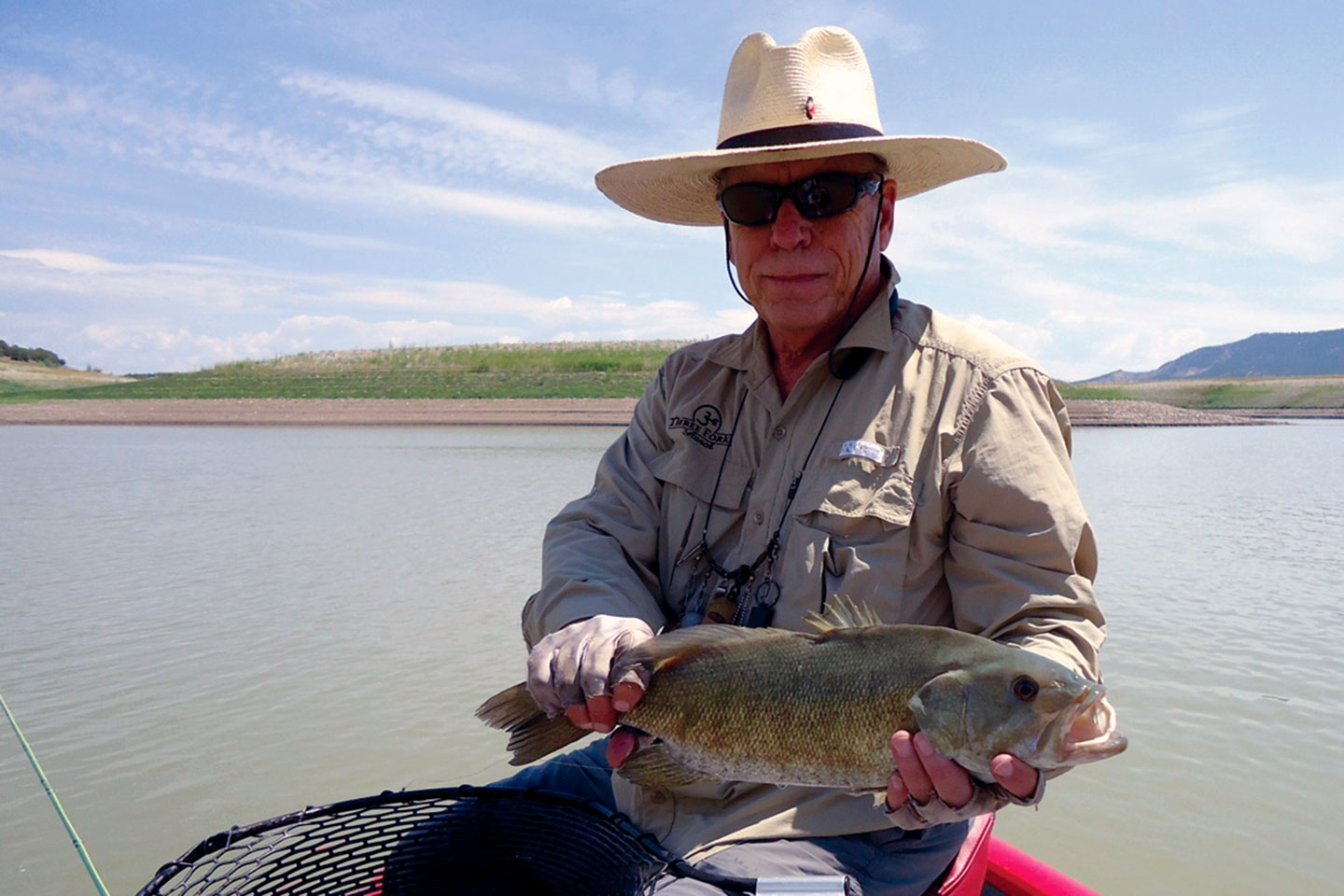Let’s say someone near and dear to you gave you a shop-till-you-drop card redeemable at your local fly shop. The only problem, even though you’ve talked about getting into the sport, it’s only been talk. So, what do you do? Blindly walk into the fly shop and announce that someone has given you a shopping spree for fly fishing equipment? Or, do a little research so you and the professional at the shop can work together? I vote for research.
I believe the first thing you need to decide is where will you do 90% of your fly fishing. Will it be the rivers and streams in the mountains, or from something that floats on a lake, or in saltwater? They each use different types of equipment.
If you plan on doing most of your fishing in the mountains on small streams or larger rivers one of the most important items is what you put on your feet. I prefer boots that have felt soles and metal studs. I know there has been some controversy, over the past years, about felt and studs. I have used boots without felt and studs, and I don’t feel confident when walking. It’s a personal choice.
To cover your legs there are three choices, hip boots, waist high-and chest high- waders. For high mountain streams either hip boots or waist high waders work great. Hip boots have become harder to find and waist high waders are more versatile. Chest waders are the most common, and will allow you to wade into deeper water. Being old, and not having real good balance, I stay with the waist high waders. They prevent me from wading into deep and fast water. Again, give some thought to where you’ll be wading.
If you’re going to mainly be fishing from something that floats, boots and waders take on a different role. For a float tube — chest waders and an inexpensive pair of red Converse tennis shoes work well. If on a paddle board or the deck of a boat forget the waders, but find a good pair of non-slip shoes. Falling into the water because your feet slip out from under you is no fun.
You can’t fly fish without a rod and reel. Again, where you plan on doing your fly fishing will dictate which rod and reel you buy; think entry level. For high mountain streams a 4-or 5-weight rod works. If you’re going to be fishing lakes, I think a 5-or 6-weight rod will handle anything you might hook into. For saltwater I recommend an 8-or 9-weight rod. To go with your rod, you’ll need a reel. And similar to fly rods, you can break the bank with reels. I go with the theory that for fresh water the job of the reel is merely a place to store line. Most fresh water fish, especially in the mountains, won’t take you into the backing. For fly fishing saltwater you’ll need a reel that can hold 300 yards of backing, and a drag that can slow and turn an 80-pound tarpon.
To go on the reels is line. Don’t try to skimp and save money on the fly line. While there are an endless number of lines, pick a good one that will last for a few years and preform the job it is advertised to do. I have seen lots of cheap lines that fail the test of time. It’s just not worth it to get this close to the check-out counter only to have a product that was bought for savings, not performance.
O.K., you’ve done some research, have an idea of where you’re going to spend 90% of your fly fishing time, have some good questions about equipment in mind, now go to your neighborhood fly shop. Pick a slow shopping day, that way the professional in the shop will have lots of time to assist and guide you. And, remember, the owner of the fly shop wants you for a long-time customer. He or she, will do everything in his or her power to make you a happy and satisfied customer. At least that’s been my experience.

